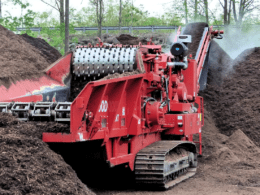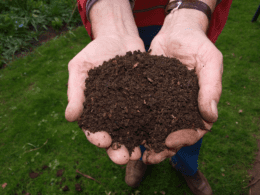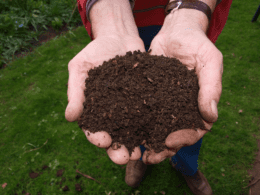Are you tired of looking at a lackluster lawn and garden? Do you want a natural and effective solution to improve the health and appearance of your yard? Look no further than compost! By adding compost to your soil, you can revitalize your yard in no time.
Compost is a versatile and nutrient-packed soil amendment that can be used in a variety of ways to enhance your yard’s health. It improves soil nutrition and moisture retention, which means your plants will have everything they need to grow strong and healthy. Plus, it’s a great way to add a green boost to your lawn without resorting to harsh chemicals.
In this article, we’ll explore the many benefits and uses of compost and provide tips for how to use it effectively in your yard. With compost, you can achieve a lush and vibrant yard that is both beautiful and healthy.
Quick Takeaways
- Compost is a versatile and nutrient-packed soil amendment that can enhance your yard’s health in various ways.
- Compost provides a sustainable way to recycle organic waste and improves overall plant and grass health.
- Calculating the amount of compost needed for your yard project can be done by measuring the square footage and desired depth of compost.
- Composting methods such as aerobic and anaerobic composting can help produce the amount of compost needed for your project.
What Are the Benefits of Using Perlite in Composting?
Using perlite in composting offers several benefits for gardening. Perlite is a lightweight, porous material that improves aeration and drainage in soil, preventing waterlogged conditions. This ensures optimal root growth and reduces the risk of mold and root rot. Furthermore, perlite does not decompose, providing long-lasting structure to compost. Incorporating perlite in composting promotes healthier plants and helps maintain a well-balanced garden ecosystem. The benefits of perlite for gardening are undeniable.
Compost Applications
You can easily apply compost to your lawn or garden as a mulch or top dressing, reintroducing nutrients and improving moisture retention.
For direct plant application, simply spread the compost around the base of your plants, making sure not to cover the stem or trunk. This will act as a natural fertilizer and slowly release nutrients into the soil as it decomposes.
Another way to apply compost is by making compost tea. This involves steeping compost in water and using the resulting liquid to water your plants.
Simply place a few shovels of compost in a large bucket or container, fill with water, and let it sit for a few days. Strain the liquid and dilute it with water before using it to water your plants.
Compost tea can also be used as a foliar spray, which can help boost plant growth and improve their overall health.
Benefits of Compost
Enhance the nutrition and moisture retention of soil while reintroducing nutrients and minerals by incorporating compost into your garden and lawn. Not only does compost provide a sustainable way to recycle organic waste, but it can also improve the overall health of your plants and grass. The benefits of compost include increased soil fertility, enhanced root development, and better water-holding capacity.
To better understand the advantages of compost, take a look at the following table:
| Benefits of Compost | How it helps |
|---|---|
| Improves soil nutrition | Adds essential nutrients and minerals to soil, creating a healthy environment for plants to grow |
| Enhances moisture retention | Improves soil structure, allowing it to hold more water and reducing the need for frequent watering |
By incorporating compost into your lawn and garden, you can create a sustainable and thriving environment for your plants to flourish. Not only will you be doing your part to reduce waste, but you’ll also be providing your plants with the essential nutrients and moisture they need to thrive.
Amount Needed
To determine the amount of compost needed for your lawn or garden project, use a formula based on whether you are preparing a new area or adding to an existing bed.
For new planting areas, apply a 2- to 3-inch layer of compost and mix it into the top 6 inches of soil.
For existing beds, apply a 1- to 2-inch layer of compost on top of the soil and mix it in with a garden fork or tiller.
Calculating requirements for compost can be done by measuring the square footage of the area to be covered and multiplying it by the desired depth of compost.
For example, if you want to cover a 100 square foot garden bed with compost that’s 2 inches deep, you’ll need 16.7 cubic feet of compost.
There are also composting methods that can help you produce the amount of compost you need for your project, such as aerobic and anaerobic composting.
By understanding how much compost you need and the different composting methods available, you can revitalize your yard with the benefits of compost.
Frequently Asked Questions
How long does it take for compost to break down and become usable for my lawn and garden?
It takes 4-6 months for compost to break down and become usable for your lawn and garden. Composting methods vary, but organic matter like leaves, grass clippings, and kitchen scraps can be used.
Can I use compost made from animal products, like meat and dairy, in my garden?
Using animal product compost alternatives is important for reducing the environmental impact of meat composting. It’s not recommended to use meat and dairy in your garden compost. Instead, stick to plant-based options like vegetable scraps and yard waste.
How often should I add compost to my lawn and garden?
To keep your lawn and garden healthy, add compost at least once a year. Best seasons to do this are spring and fall. Use about 1-2 inches for existing beds and 3-6 inches for new planting areas.
Can I make my own compost at home, and if so, what materials should I use?
You can easily make compost at home! Start by collecting kitchen scraps, yard waste, and paper products. Ideal composting materials are fruit and veggie scraps, leaves, grass clippings, and shredded paper. Happy composting!
Are there any precautions I need to take when using compost, such as wearing gloves or avoiding certain types of plants?
When using compost, it’s important to wear gloves to protect your skin from harmful bacteria. Some plants, like tomatoes, don’t like the high nitrogen content in fresh compost. Wait a few months after applying compost before planting.









